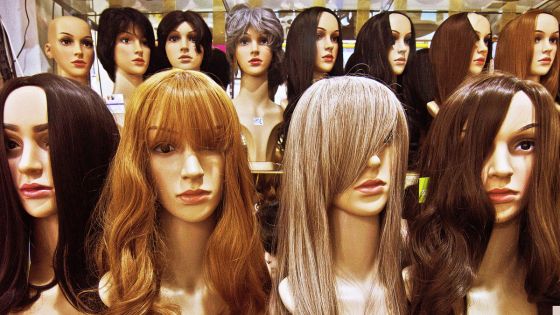Experiencing hair loss can be a challenging and emotional journey. Whether it’s due to medical conditions, treatments, or genetics, finding the right wig can significantly boost your confidence and restore a sense of normalcy. Here’s a comprehensive guide to help you choose the best wig for hair loss.

Understanding Your Needs
Before diving into the specifics of wig types and styles, it’s essential to understand your personal needs:
- Type of Hair Loss: Identify the cause and extent of your hair loss. Conditions like alopecia, chemotherapy, or thinning hair each have different requirements.
- Lifestyle: Consider your daily activities. Do you need a wig that’s easy to maintain? Do you prefer a style that can be worn during exercise or swimming? Working with a wig specialist can help you work out all of these considerations and find the best type for your needs.
- Budget: Determine your budget. Wigs can range from affordable synthetic options to high-end human hair wigs.
Types of Wigs
1. Synthetic Wigs
Synthetic wigs are made from man-made fibers that mimic the look and feel of natural hair. They are generally more affordable than human hair wigs and require less maintenance.
- Advantages:
- Cost-Effective: They are usually less expensive.
- Low Maintenance: They hold their style after washing and require minimal styling.
- Variety: Available in a wide range of colors and styles.
- Disadvantages:
- Heat Sensitivity: Most cannot be styled with heat tools.
- Durability: They tend to wear out faster than human hair wigs.
2. Human Hair Wigs
Human hair wigs are made from real human hair, offering a natural look and feel. They are versatile and can be styled with heat tools.
- Advantages:
- Natural Appearance: They look and feel like natural hair.
- Styling Versatility: Can be styled with heat tools and dyed.
- Longevity: With proper care, they last longer than synthetic wigs.
- Disadvantages:
- Cost: They are more expensive.
- Maintenance: Require regular washing, conditioning, and styling.
- Availability: Limited color and style options without customization.
Wig Construction
1. Lace Front Wigs
Lace front wigs have a sheer lace panel along the front hairline, allowing for a natural-looking hairline and off-the-face styling.
- Advantages:
- Realistic Hairline: Creates the illusion of natural hair growth.
- Styling Flexibility: Allows for versatile styling options.
- Disadvantages:
- Delicate: The lace can be fragile and requires careful handling.
- Application: May require adhesive for secure attachment.
2. Full Lace Wigs
Full lace wigs have a lace base covering the entire scalp, offering maximum versatility in styling.
- Advantages:
- Styling Options: Can be parted anywhere on the scalp.
- Comfort: Lightweight and breathable.
- Disadvantages:
- Cost: More expensive due to the intricate construction.
- Durability: The lace is delicate and can be prone to tearing.
3. Monofilament Wigs
Monofilament wigs feature a thin, breathable mesh at the crown, creating the appearance of natural hair growth.
- Advantages:
- Realism: Provides a natural scalp appearance.
- Comfort: Soft and suitable for sensitive scalps.
- Disadvantages:
- Cost: Generally more expensive than basic cap constructions.
- Styling Limitations: May not offer the same versatility as full lace wigs.
Wig Fit and Comfort
Ensuring a proper fit is crucial for comfort and natural appearance:
- Measurements: Measure your head size accurately to select the right wig size. Most wigs come in small, medium, and large.
- Adjustable Straps: Look for wigs with adjustable straps or elastic bands for a secure fit.
- Wig Caps: Use a wig cap to keep your natural hair in place and provide a smooth surface for the wig.
Styling and Maintenance
- Styling Products: Use products specifically designed for wigs to maintain their appearance and longevity.
- Washing: Follow the manufacturer’s instructions for washing and conditioning your wig.
- Storage: Store your wig on a wig stand to maintain its shape when not in use.
